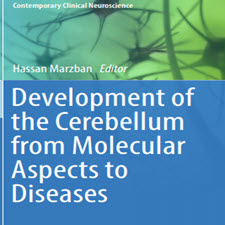Factors predisposing to the development of multiple sclerosis
ABSTRACT
Multiple sclerosis (MS) is a chronic neurological disease, which is known to be more common in UK than many countries. While there are multiple genetic factors affecting risk of developing MS and disease severity within the condition, evidence on the rising worldwide prevalence and the increasing female to male preponderance has focused interest on environmental factors influencing MS risk. Data on several of these factors are reviewed, with particular focus on those such as vitamin intake, smoking and obesity, which may be influenced at a personal and population level by medical advice. When patients ask what has caused their illness, they are usually referring to the aetiology rather than the pathological basis. For example, people with multiple sclerosis (MS) asking about the cause of their condition are not interested so much in T-cell abnormalities and other immune dysfunction as knowing some of the factors that may have predisposed them to develop this autoimmune condition. The aim of this article is to review the data on MS risk factors, with particular emphasis on those which may be modifiable through medical advice at a personal and population level.
INTRODUCTION
The worldwide incidence of MS is rising, and is currently estimated to be about 3.6/100 000 personyears in women and 2.0/100 000 person-years in men.1 The female preponderance, common to many autoimmune diseases, is increasing, from an estimated 1.4 in 1955 to 2.3 in 2000.1 MS is particularly common in UK, with an incidence of 7.2/100 000 in women and 3.1/100 000 in men. Much MS risk is known to be genetic, with particular HLA patterns, such as DRB1*1501 (HLA DR15), conferring higher risk. Many genes have been identified for predisposition to the disease or severity level within diagnosed populations.3 This genetic element accounts for the higher disease risk in first-degree relatives of people with MS. For example, the Danish series found an excess lifetime risk of 2.5% for first-degree relatives, to be added
to the general population sporadic risk (0.5% in females, 0.3% in men).4 However, much risk must be environmental, as shown by the lack of complete concordance for MS between identical twins.5 The epidemiological data discussed above shows that MS risk varies between ountries, with some such as the UK clearly being a relatively high risk area. This variation is not due solely to the differences in gene pools and ethnic mix between countries.
چکیده
مولتیپل اسکلروزیس (MS) یک بیماری مزمن عصبی است که در انگلستان بیشتر از بسیاری از کشورها شایع است. در حالی که عوامل ژنتیکی متعددی وجود دارد که بر خطر ابتلا به MS و شدت بیماری در این شرایط تأثیر می گذارد، شواهدی از شیوع در حال افزایش در سراسر جهان و افزایش برابری زن و مرد، علاقه مند به عوامل محیطی بر روی خطر MS است. داده های مربوط به تعدادی از این عوامل مورد بررسی قرار می گیرند، با توجه خاص به موارد مصرف مانند مصرف ویتامین، سیگار کشیدن و چاقی، که ممکن است توسط توصیه های پزشکی تحت تاثیر قرار گیرد در سطح شخصی و جمعیتی. هنگامی که بیماران از آنچه که باعث بیماری آنها شده است بپرسند، معمولا به علت آسیب شناسی به جای پاتولوژی اشاره می کنند. به عنوان مثال، افرادی که مبتلا به مولتیپل اسکلروزیس (MS) در مورد علت بیماری خود هستند، به علت ناهنجاری های سلول T و سایر اختلالات ایمنی، به علت شناخت بعضی از عوامل که ممکن است آنها را مستعد ابتلا به این بیماری خودایمنی، قرار دهد، بسیار علاقه مند نیستند. هدف از این مقاله، بررسی داده ها در مورد عوامل خطر MS است، با تاکید خاص بر آنهایی که ممکن است از طریق مشاوره پزشکی در سطح شخصی و جمعیت قابل تغییر باشد.
مقدمه
بروز جهانی MS در حال افزایش است و در حال حاضر تخمین زده می شود که حدود 3.6 / 100.000 سال انسانی در زنان و 2.0 / 100 000 سال انسانی در مردان است. غلبه بر زنان که برای بسیاری از بیماری های خودایمنی رایج است، 1.4 در سال 1955 به 2.3 در سال 2000.1 است. MS در انگلستان بسیار رایج است، با شیوع 7.2 در 100000 در زنان و 3.1 در 100 000 در مردان. اغلب خطر MS به علت ژنتیکی بودن آن با الگوهای خاص HLA مانند DRB1 * 1501 (HLA DR15) شناخته شده است و خطر بیشتری را به همراه دارد. بسیاری از ژن ها برای تشخیص بیماری و یا سطح شدت در جمعیت های تشخیص داده شده شناسایی شده اند. این عنصر ژنتیکی به علت خطر بالای بیماری در بستگان درجه اول افراد مبتلا به MS است. به عنوان مثال، مجموعه دانمارکی خطر ابتلاء بیش از حد به طول عمر 2.5٪ برای بستگان درجه اول را در بر می گیرد که به ریسک پراکنده جمعیت عمومی (0.5٪ در زنان و 0.3٪ در مردان) اضافه می شود .4 با این حال، همانطور که توسط عدم انطباق کاملی برای MS بین دوقلوهای یکسان نشان داده شده است. داده های اپیدمیولوژیک مورد بحث فوق نشان می دهد که خطر MS در بین اعضای بدن متفاوت است، به گونه ای که انگلستان به وضوح یک منطقه نسبتا بالا ریسک است. این تنوع تنها به تفاوت های موجود در مجموعه های ژنی و ترکیب قومی بین کشورها بستگی ندارد.
Year: 2011
Publisher : OJM
By : C.A. YOUNG
File Information: English Language/ 4 Page / size: 113 KB
سال : 1390
ناشر : OJM
کاری از : C.A. جوان
اطلاعات فایل : زبان انگلیسی / 4 صفحه / حجم : KB 113


![Factors predisposing to the development of multiple sclerosis[taliem.ir]](https://taliem.ir/wp-content/uploads/Factors-predisposing-to-the-development-of-multiple-sclerosistaliem.ir_.jpg)
![Development.of.In.Vitro.Maturation.for.[taliem.ir] Development.of.In.Vitro.Maturation.for.[taliem.ir]](https://taliem.ir/wp-content/uploads/Development.of_.In_.Vitro_.Maturation.for_.taliem.ir_.jpg)
![Handbook.of.Life.Course.Health.Development.[ta;iem.ir] Handbook.of.Life.Course.Health.Development.[ta;iem.ir]](https://taliem.ir/wp-content/uploads/Handbook.of_.Life_.Course.Health.Development.taiem_.ir_.jpg)
![liBeralization, migration, and development[taliem.ir] liBeralization, migration, and development[taliem.ir]](https://taliem.ir/wp-content/uploads/liBeralization-migration-and-developmenttaliem.ir_.jpg)
![On the Research and Development[taliem.ir] On the Research and Development[taliem.ir]](https://taliem.ir/wp-content/uploads/On-the-Research-and-Developmenttaliem.ir_.jpg)

![Cellular and Molecular Life Sciences.[taliem.ir] Cellular and Molecular Life Sciences.[taliem.ir]](https://taliem.ir/wp-content/uploads/Cellular-and-Molecular-Life-Sciences.taliem.ir_.jpg)
![Design and development of logistics workflow systems for demand[taliem.ir] Design and development of logistics workflow systems for demand[taliem.ir]](https://taliem.ir/wp-content/uploads/Design-and-development-of-logistics-workflow-systems-for-demandtaliem.ir_.jpg)
![Dermal.Drug.Selection.and.Development.An.Industrial.[taliem.ir] Dermal.Drug.Selection.and.Development.An.Industrial.[taliem.ir]](https://taliem.ir/wp-content/uploads/Dermal.Drug_.Selection.and_.Development.An_.Industrial.taliem.ir_.jpg)
![Cognitive–behavioral therapy for primary insomnia[taliem.ir]](https://taliem.ir/wp-content/uploads/Cognitive–behavioral-therapy-for-primary-insomniataliem.ir_-150x150.jpg)
![Temperature and neuromuscular function[taliem.ir]](https://taliem.ir/wp-content/uploads/Temperature-and-neuromuscular-functiontaliem.ir_-150x150.jpg)
دیدگاه خود را ثبت کنید
تمایل دارید در گفتگو شرکت کنید؟نظری بدهید!